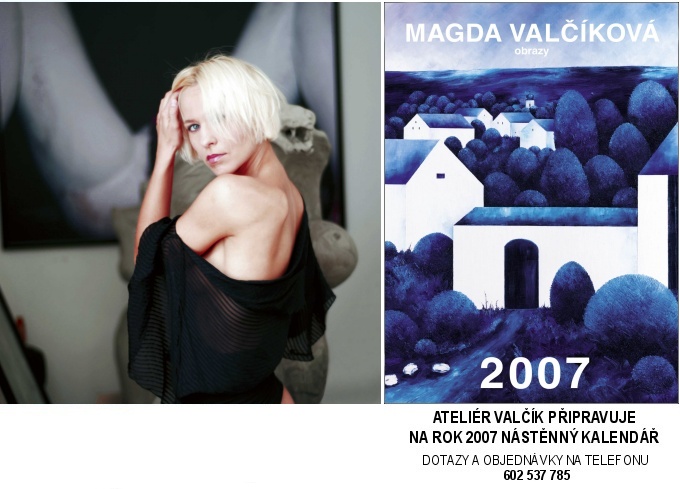
|
Magda Valčíková
Magda Valčíková is the
North Star of Studio Valčík. Since the mid-nineties
she has not moved beyond the boundaries of
painting. Magda Valčíková’s world of painting is
made up of landscapes, the still-life and
bouquets and today, whether this is the result
of the role that her father’s teachings played
or her own natural inclinations is not important.
The fact that Magda Valčíková has not ventured
beyond the boundaries of painting does not
however mean that her painterly world is one of
pure painting, i.e. the subject-less environment
of surfaces and colors with no sense of volume
and space. This is contradicted by her interest
in traditional genres of painting. In her
landscapes, bouquets and still-life paintings we
usually encounter natural, introduced and
artificial objects. Their forms are highly
varied and the way in which they are created
ranges from generalized outlines to very
specific collages and assemblages. Even though
Magda Valčíková’s still-life paintings are
stylized and her landscapes are sometimes
specific and at others more universalized
Moravian locations or even dreamy landscapes,
they never abandon the world of things. On the
contrary, it is in fact the world of things that
interests her the most. We only find living
beings, people or moving animals in paintings
quite rarely. The living world is one
exclusively of trees, fields and meadows. In the
still-life we do encounter the animal world but
reduced to a minimum in the form of sitting or
sleeping cats or completely unmoving, e.g. a
crayfish on a table. The same is true for her
bouquets, where the flowers in vases are still
alive but removed from their natural environment.
This characteristically silent world may lead to
the hypothesis that Magda Valčíková is a still-life
painter, a painter of anesthetized nature.
Although this hypothesis may seem attractive at
first glance, it doesn’t hold completely. Her
landscapes provide the strongest resistance.
Even if we accept the possibility that nature
here is really idealized, dream-like and
universalized, there are cases where even the
painting’s titles evoke specific locations.
Although this is sometimes directly, others via
the paintings of other artists, it does not
diminish the fact that they deal with specific
landscapes. Here nature, represented by the
elements and most importantly vegetation, and
civilization, represented by various types of
human dwellings, contrast with one another. This
contrast between nature and civilization is the
basic building block of Magda Valčíková’s
paintings, providing evidence against the idea
of intentionally pure painting. Professor Marian Zervan, Ph.D. (b. 1952) is a theoretician and esthetician in the fields of art and contemporary architecture. I is the author of books of sacred iconography and as a curator has organized exhibitions on Slovak architecture at home and abroad. He has also written the catalogs for these exhibitions. He is an assistant professor at both the Faculty of Architecture of the Slovak Technical University in Bratislava and the College of Fine Arts in Bratislava. |